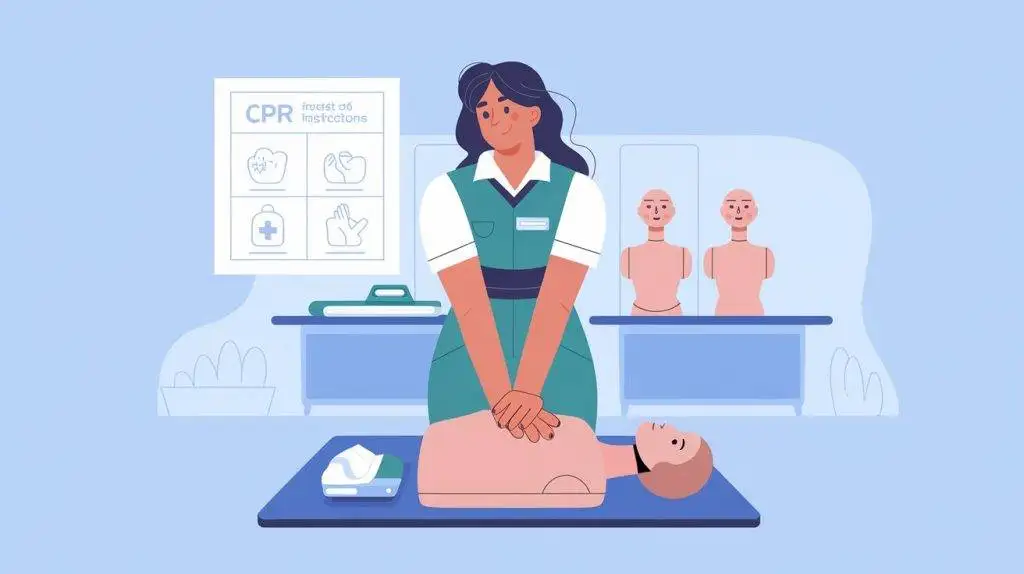Training and Assessment Delivered on Behalf of Allens Training Pty Ltd RTO 90909
Do You Give CPR if There’s No Pulse but They’re Breathing?
Picture this: someone collapses, and you spring into action. You check for a pulse—nothing. But wait, they seem like they’re breathing. What now? Do you give CPR or leave them be? It’s a tricky situation, but let’s break it down step by step, so you know exactly what to do.
Pulse Checks? Leave Them to the Experts
Here’s the first thing to know: checking for a pulse isn’t really recommended for most first aiders in Australia anymore. It’s a tough skill to get right, especially when you’re stressed. Even professionals like paramedics sometimes struggle to feel a pulse under pressure. Instead, first aiders use a simpler and more effective method: look, listen, and feel.

How to Look, Listen, and Feel
To check if someone is breathing effectively, here’s what to do:
- Put your hand on their chest. Feel for any movement under your palm.
- Look at their chest. Is it rising and falling in a smooth, regular way?
- Listen for air coming out of their mouth or nose.
- Feel for breath on your cheek as you lean in close.
This hands-on approach helps you confirm whether they’re breathing properly without needing to check for a pulse.

Can They Be Breathing but Have No Pulse?
Here’s the short answer: no. If someone has no pulse, they can’t be breathing. Their heart isn’t pumping blood, and without blood flow, oxygen isn’t moving through the body.
But here’s where it can get confusing: sometimes a person might look like they’re breathing, but they’re not. This is called agonal breathing, and it’s a reflex response from the brain that can happen when the heart has stopped. It can throw you off if you don’t know what to look for.
What Is Agonal Breathing, and How Can You Spot It?
Agonal breathing is a sign of a life-threatening emergency. It’s not real, effective breathing—it’s more like a last-ditch reflex from the brain when the heart has stopped. Here’s how you can tell the difference:
- Agonal breathing: It’s irregular, sounds strained or like gasping, and doesn’t follow a natural rhythm. You might hear snorting, gurgling, or groaning noises. The chest might twitch or jerk rather than rise and fall smoothly.
- Effective breathing: It’s steady, smooth, and regular. The chest rises and falls evenly, and you’ll feel consistent air movement on your cheek.
If it’s agonal breathing, don’t hesitate—start CPR. Gasping isn’t enough to sustain life.
Do You Give CPR if There’s No Pulse but They’re Breathing?
If there’s no pulse and the breathing looks or sounds irregular (agonal), start CPR immediately. On the other hand, if the person is breathing normally, with regular chest movements, no CPR is needed—keep monitoring them and call for help.
Learn Hands-On in Our Classes

We teach the look, listen, and feel method with hands-on practice in our CPR and first aid courses. You’ll learn to spot the difference between effective breathing and gasping, so you’re confident and ready when it counts.
vIf you’re in Toowoomba or Wollongong, sign up for one of our courses today and get the skills you need to handle real-life emergencies. Because when it comes to saving lives, confidence is everything.

